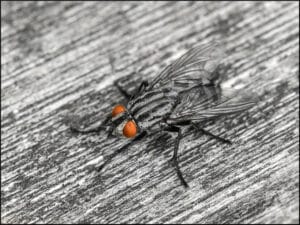
In order to recognize PTSD and depression in chimpanzees and apes, scientists use specific criteria described in the Diagnostic and Statistical Manual of Mental Disorders. But this only works in close confinement. In the wild, and in sanctuary sites, it is hard to measure physiological markers because the whole point of those environments is that animals are not interfered with.
In the wild, chimpanzees groom themselves and each other. This has nothing to do with hair styling or fingernail painting, but could be more accurately be called hygienic cleaning. It just means picking off parasites and other insects, dirt clods, dried skin, or plant debris. It gives them something to do with their hands, and serves important social functions. The information may seem gratuitous in this context, but the big picture is that possibly these animal investigations could reveal important secrets about how to prevent childhood obesity.
Like detectives or lawyers, medical researchers sift through tons of evidence in the hope of connecting two obscure facts and making some kind of breakthrough. The habits of non-human creatures may seem off-topic, but everything has to be noticed. Nobody wants future researchers to look back in scorn, asking, “Why didn’t they see that?”
Different strokes for different folks
When faced by the internal threat of anxiety or the external threat of attack, some animals engage in feather-plucking, paw-licking and hair-pulling, as mentioned in the previous post. Those weird behaviors (and no doubt others) could be regarded as grooming gone wild. It is normal, acceptable activity multiplied to the nth power, crossing over the line into self-harm.
While some species will react to bad feelings with self-soothing grooming activities, distressed chimps generally do not use grooming as a displacement activity. They are much more likely, when mentally/emotionally upset, to avoid grooming themselves or others. When confined, they may smear their feces around the environment, which could qualify as a displacement behavior.
Freezing as a response
We also mentioned how professionals in the field have speculated that there may be many more possible threat responses than previously believed. Depending on how they are defined, those would be fight, flee, freeze, feed, fornicate, fool around, fidget, and faint. Some are very relevant to human overeating; others not so much.
Leon F. Seltzer, Ph.D., talks about freezing, an option that sometimes works for animals, being adaptive in many cases. Immobility can equal invisibility, depending on the degree of camouflage that nature has provided, and how the predator’s eyes are constructed, and whether the predator has a great sense of smell, and on whether something more interesting attracts the monster’s attention in the meantime.
When both fight and flight are impossible, freezing is an option. Even a spider on a wall is less likely to be noticed when still than when walking.
In a human we might call freezing impractical, based on a childish belief that the aggressor will become bored or distracted; or forget about, or literally be unable to see the victim. But as many children have learned from alcoholic or otherwise rage-fueled parents, immobility can sometimes buy safety. Dr. Seltzer says,
Under such unnerving circumstances, “freezing up” or “numbing out” — in a word, dissociating from the here and now — is about the only and (in various instances), best thing you can do.
In horses, a brain chemical causes the freeze reflex, but it can be deceptive. Senior instructor at Tellington TTouch Training Robyn Hood writes,
We often see a “freeze” response, labeled by some people, as the horse being “stubborn…” At this point the horse is usually holding his breath and when the rider insists the horse go forward, the horse shoots forward or explodes bucking.
Study of the defensive responses in both animals and humans inspired Karin Roelofs, Professor of Experimental Psychopathology at the Behavioral Science Institute at the Radboud University in Nijmegen, Netherlands, to write,
Freezing is not a passive state but rather a parasympathetic brake on the motor system, relevant to perception and action preparation.
Your responses and feedback are welcome!
Source: “Trauma and the Freeze Response: Good, Bad, or Both?,” PsychologyToday.com, 07/08/15
Source: “The 5 F’s — Flight, Fight, Freeze, Fidget, Faint,” TellingtontTouch.com, Nov. 2001
Source: “Freeze for action: neurobiological mechanisms in animal and human freezing,” NIH.gov, 02/27/17
Image by Arend via Flickr/Attribution 2.0 Generic (CC BY 2.0)

 FAQs and Media Requests:
FAQs and Media Requests: 











